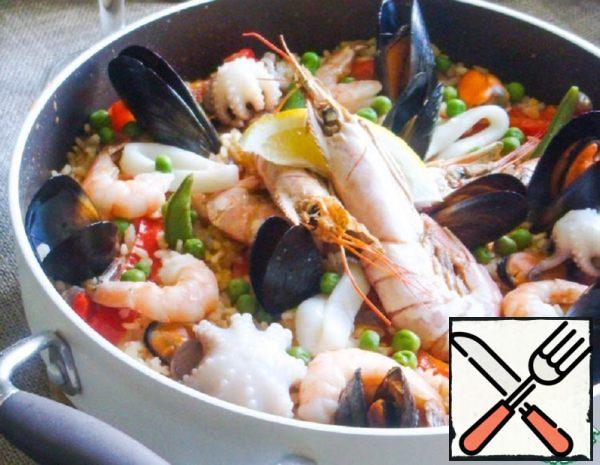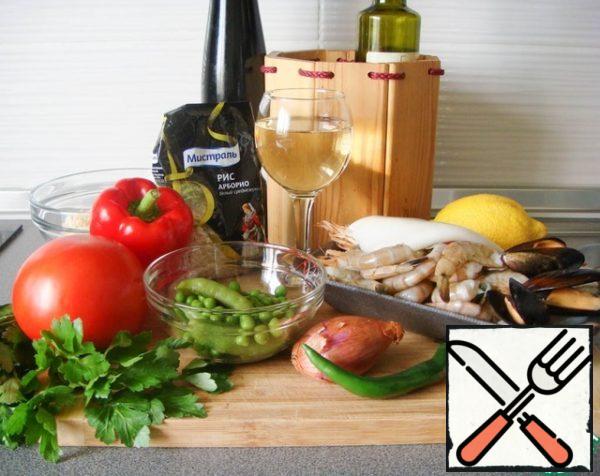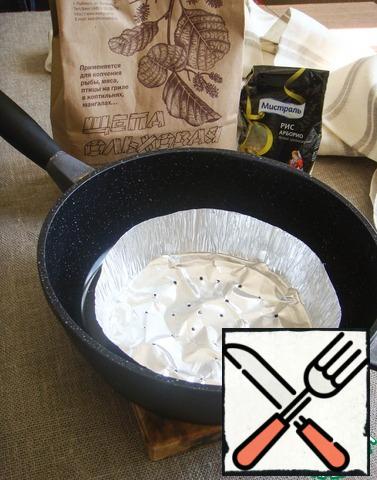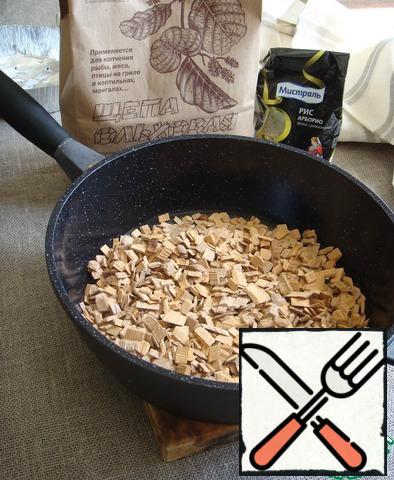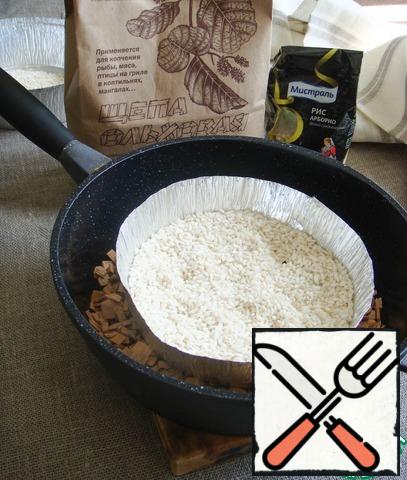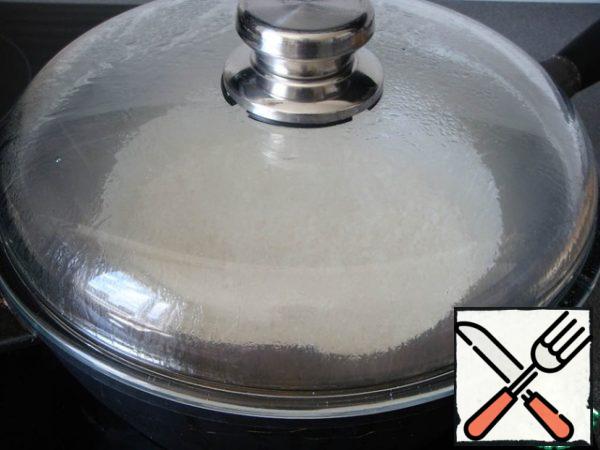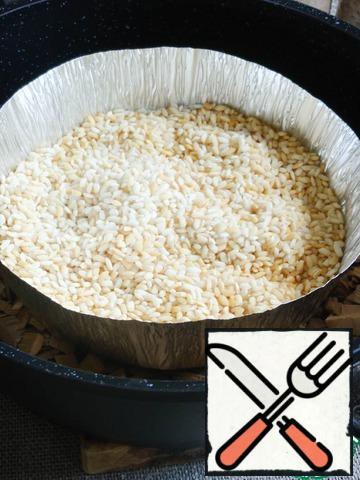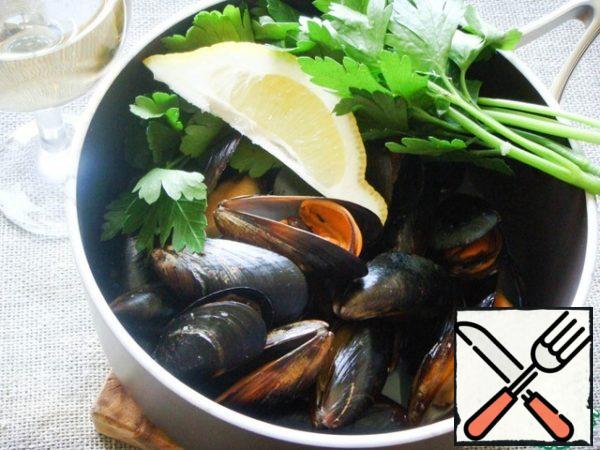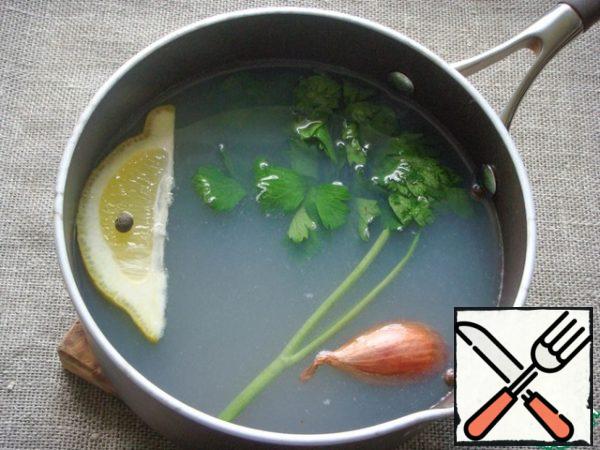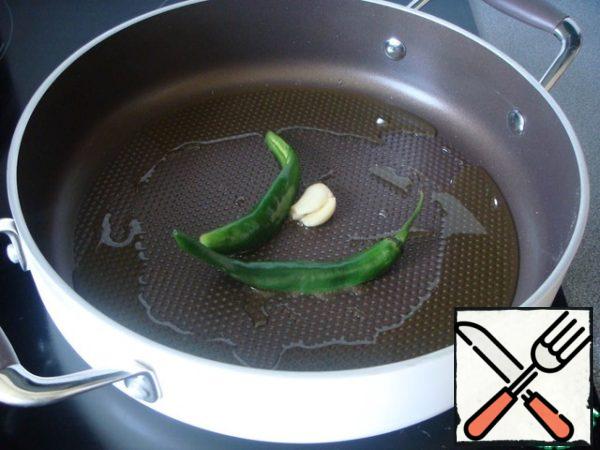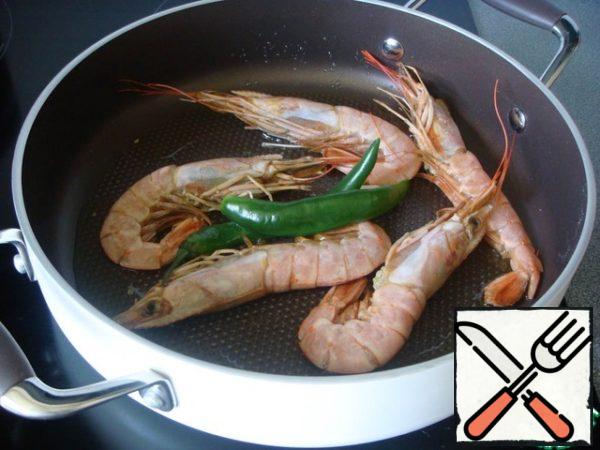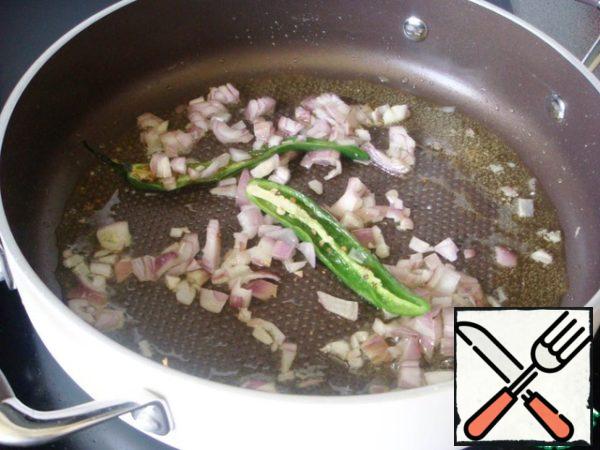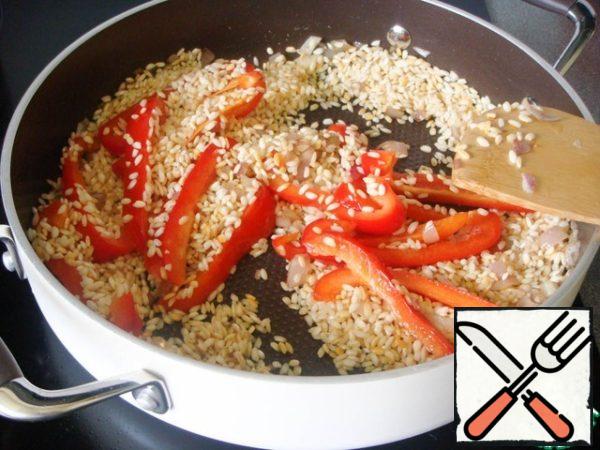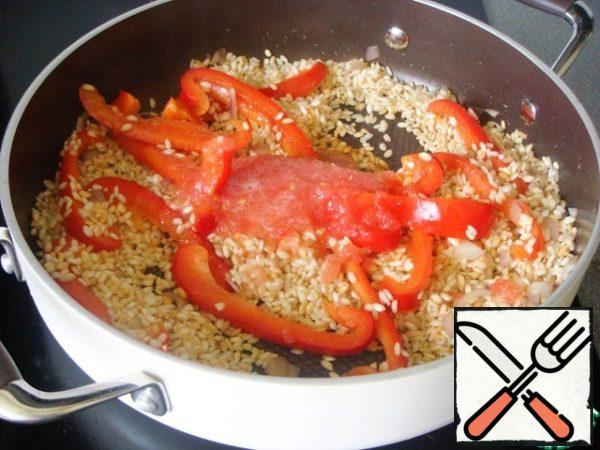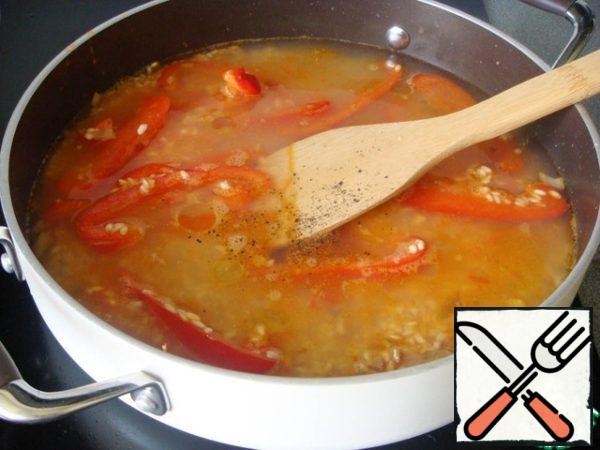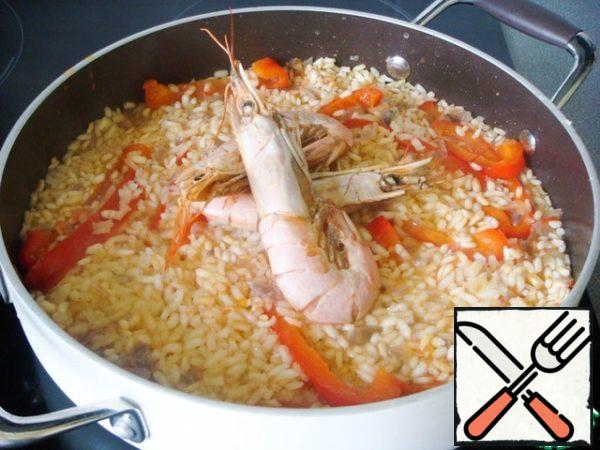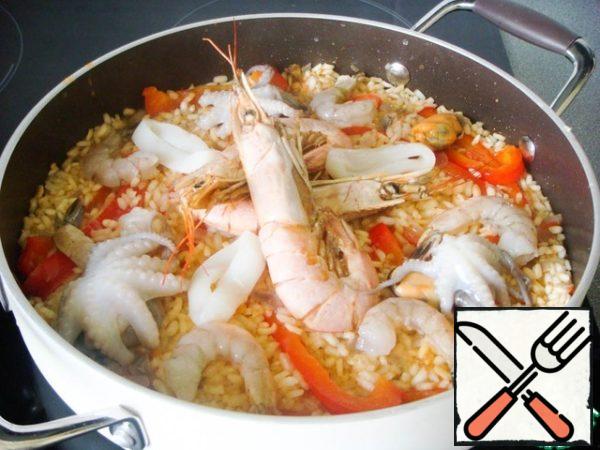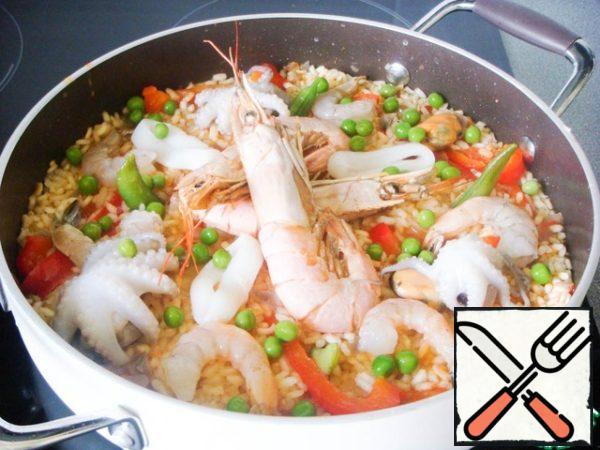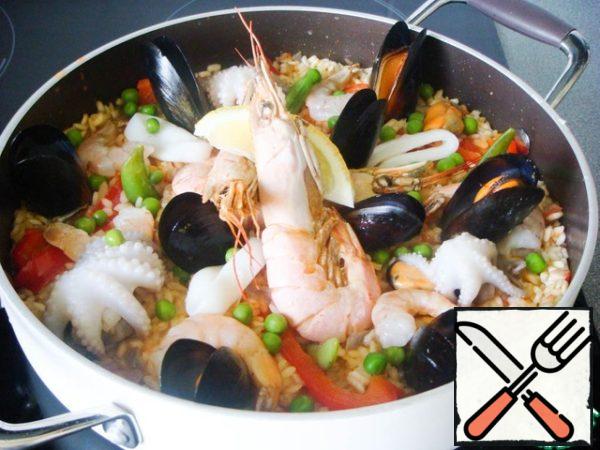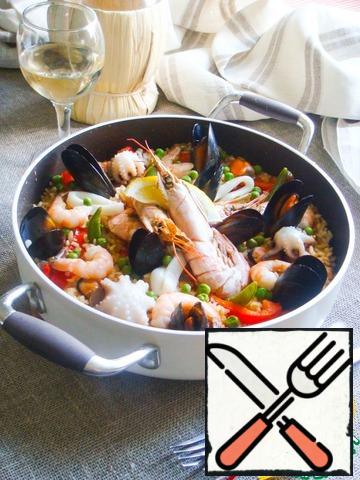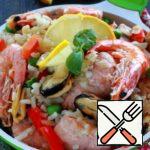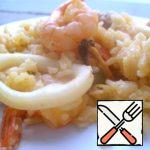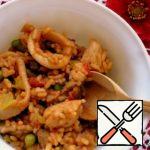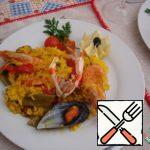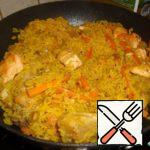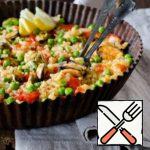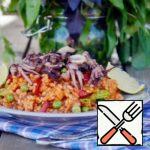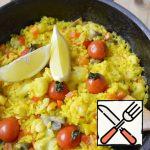When I first came to Barcelona, I really wanted to try real Spanish paella. But the locals, who are well versed in cooking, told me that the "real" paella should be tasted in Valencia, and also warned that you should not go for paella to places located on every corner on tourist routes. Instead, I was offered to try to book a table in a small restaurant that is famous for its cuisine and revered by locals. I didn't manage to get there the first time, in fact all the seats were booked, but when I got there, I was very surprised. It was there that I got acquainted with the most unusual paella of all that I have ever tasted. It was blackened! In order to somehow diversify the paella recipes presented on the site, I decided to reproduce the same, unusual, smoked paella, and at the same time introduce others to such an interesting option and an unconventional approach.
| Cook Time | 50 minutes |
| Servings |
|
Ingredients
- 250 gram Rice
- 500 gram Seafood large shrimp/mussels/squid
- 1 piece Bulgarian pepper
- 1 piece Chilli pepper
- 1 piece Tomato
- 1 piece Lemon
- 1 bunch Parsley
- 1 clove Garlic
- 200 ml Dry white wine
- 2 pieces Onion large onion + medium for broth
- 0,5 glass Green peas
- 100 ml Olive oil
- Salt, black pepper to taste
Ingredients
|
Instructions
- Prepare the products. Traditionally, paella comes with seafood, meat products, both together, or vegetarian. I chose seafood paella. Of course, it is best to cook from fresh, even the freshest, seafood, but if this is not possible, and you want paella, seafood should be thawed in the refrigerator beforehand. It is desirable that they are not boiled ice cream and are not part of a cocktail of boiled ice cream. Since seafood has different cooking times, even ice cream, they should be bought separately.
- The preparation of smoked paella begins with a special processing of rice. As I found out in the restaurant, they smoke rice for their paella. To reproduce this at home, I needed a deep thick-walled frying pan, a disposable aluminum mold that turns freely into a frying pan, and wood chips for smoking. Instead of a mold, you can use a sheet of foil folded several times. In the form of foil or awl / needle, holes are made for the passage of smoke.
- We put this construction on a strong fire, after a couple of minutes the chips will start to smoke, at this point you need to reduce the fire and close the structure with a lid. Smoke will begin to form inside the pan and "envelop the rice". If the smoke comes out from under the lid, wrap a damp towel around the perimeter of the joint of the pan with the lid, this will prevent the exit. At the time of home smoking, you need to turn on the hood and open the window. In this case, the smell of smoke, which will inevitably appear, will disappear somewhere within an hour. * Above I described the general principle of home smoking. With some practice, you can learn to smoke other foods in the same way.
- After spending about 10-15 minutes under the lid, my rice began to turn yellowish, I mixed it in the mold and left it for another 10 minutes. By this time, the smoke in the pan had stopped forming by itself - the chips had already given away what they could. So, after 25-30 minutes, my rice discolors and acquires a characteristic smoky smell. Let's close the lid until it is needed, so that the smell does not evaporate prematurely.
- Now you can start cooking paella. Traditionally, paella is cooked over an open fire, and in this case, because of the high temperature, cold water is used. In the home version, it is worth using hot liquid and it makes sense to cook broth. The broth can be vegetable/meat or fish (for example, on shrimp shells). I had mussels in shells in a/c (alas, I didn't find any others). So I decided to use the juice from mussels as a base for the broth. I poured the thawed mussels into a saucepan and warmed them for about 1 minute with wine, parsley and a slice of lemon. If you have fresh mussels, heat them over high heat until they open. Unopened mussels should be thrown away.
- Prepare all the seafood. I used: tiger shrimps - to clean off the shells, leaving the tails, remove the intestinal vein; squid - to clean, cut into rings; prepared mussels - to clean from algae, part to release from the shells, part to leave in the shells for beauty; I also added a couple of octopuses and small cuttlefish - this is for my taste.
- Prepare the vegetables: traditionally used bell peppers - cut into strips; onions - chop; green peas or string beans - defrost; tomatoes - scald, peel and finely chop, and later just rub the tomato whole through a sieve; I also prefer to use garlic - crush with a knife, and hot chili pepper - cut in half to give the aroma of oil.
- The form for paella is also called "paella". Wide in diameter, with low sides, with two handles on the edges, it should warm up evenly and conduct heat well, rice is poured into it in a thin layer so that the dish is cooked evenly. I use a pan, although the lower the sides, the better. To begin with, heat the olive oil over high heat. For flavoring, I add a crushed garlic clove and chili pepper.
- When the garlic is browned, remove from the pan and add the ingredients that require the longest cooking. I had raw very large shrimp that would not have had time to cook in a minute, so I pre-fry them for half a minute on each side. Thus, they also flavor the oil, and on the other hand, they themselves are saturated with fragrant oil. I leave a few large shrimps untouched to decorate the dish, plus this way they retain their juiciness.
- Then add the grated tomato. To interfere. At this stage, you can also add spices - for example, paprika or saffron. To enhance their taste, they are first heated in a frying pan with rice, and then tomato puree is added so that they do not start to burn. * * Surprisingly, there was no saffron in our paella, although it is considered an integral part of this dish. Perhaps we just "ran out of saffron")), but I assumed that this was done intentionally so as not to interrupt the smoky taste and color. Since I'm trying to replicate what I've tried, I also decided not to add saffron to my paella.
- Half a minute before readiness, last of all, we decoratively lay out the mussels, because in my case they are already ready, and they only need to be warmed up. Plus lemon slices for seafood. Remove the finished paella from the heat and cover with a dry towel for 5 minutes so that it absorbs excess moisture. * There is another "trick". When the paella is ready, before removing it from the fire, the fire is turned on for a maximum of 30-60 seconds, this is done to form a firm toasted crust of rice at the bottom. This crust is called socarrat, and for many gourmets - "the most delicious". So do not worry if you have such a crust formed by accident)). However, in a frying pan with a non-stick coating, such a "focus" is unlikely to be achieved even on purpose.
- The finished paella is served in the pan in which it was cooked. Of course, a glass of cold dry white wine or sangria will not be superfluous in this case. * The taste of smoked meat turned out to be quite pronounced. For me it was very unusual and interesting from the point of view of taste. And now you know about this strange kind of paella!
